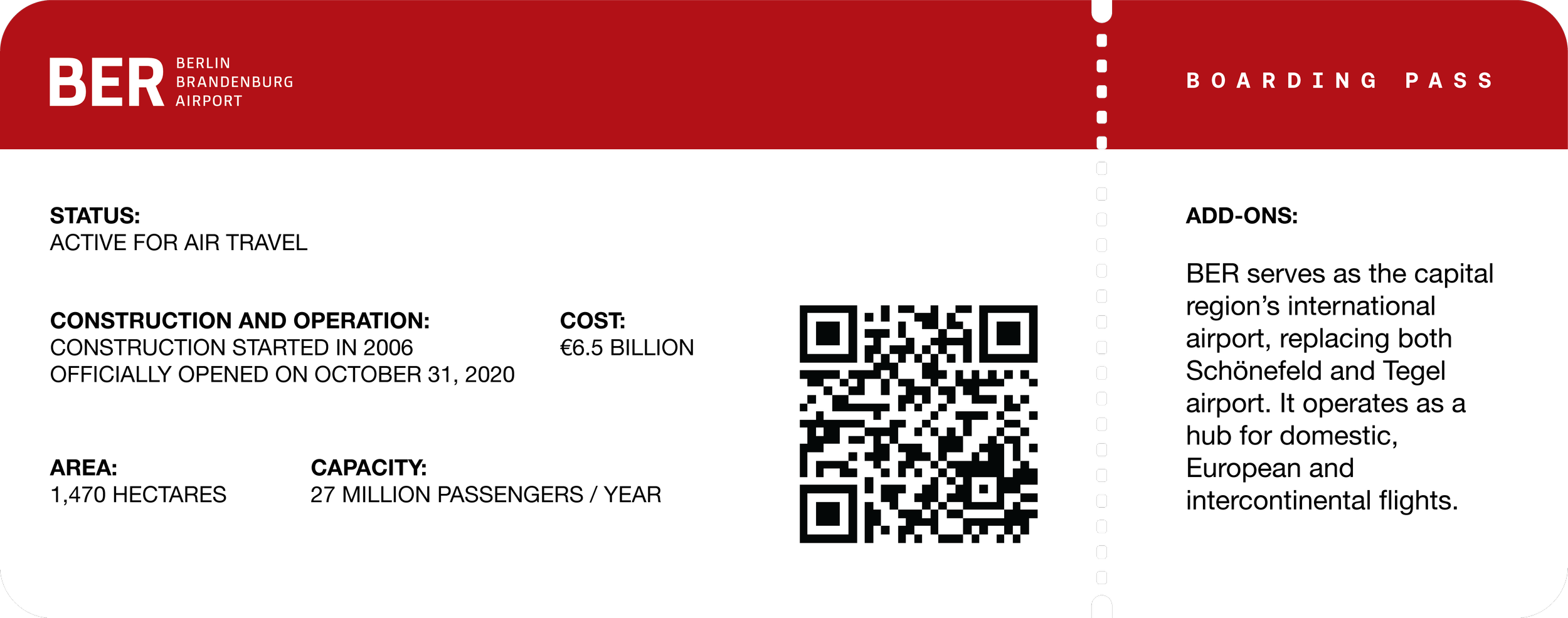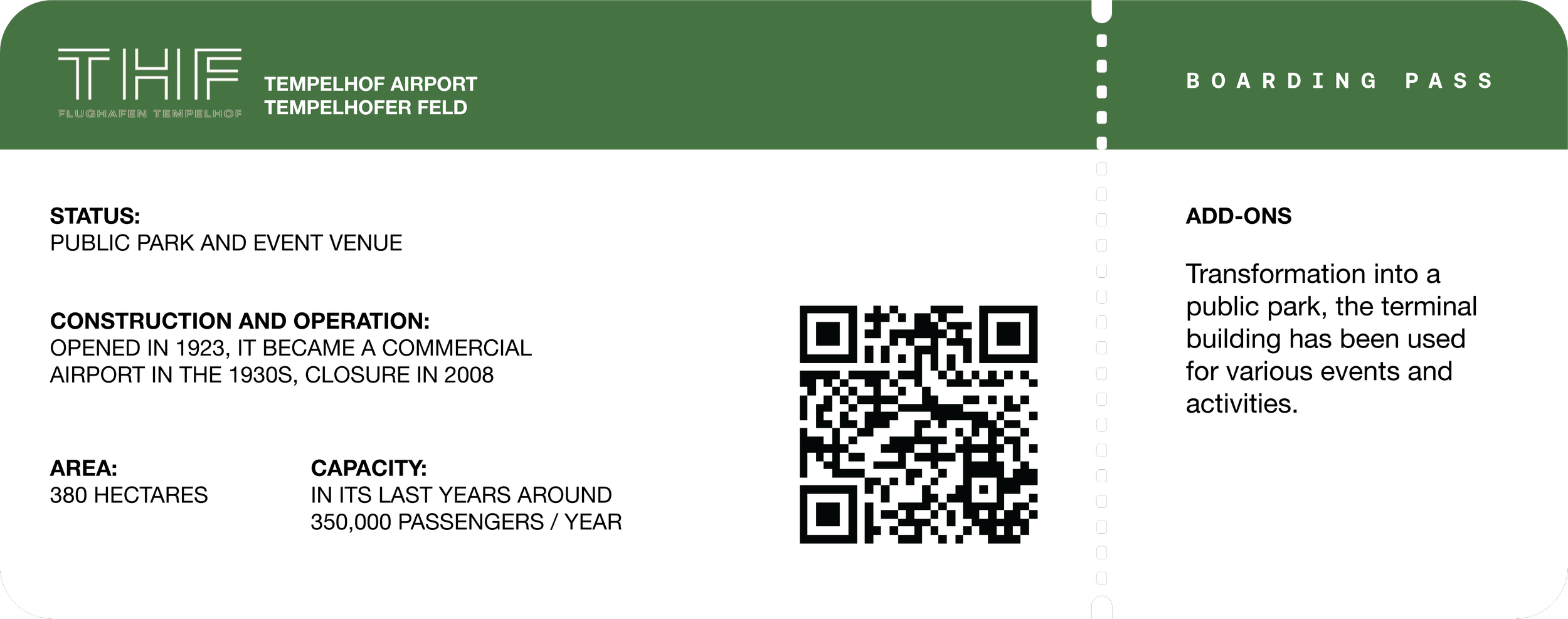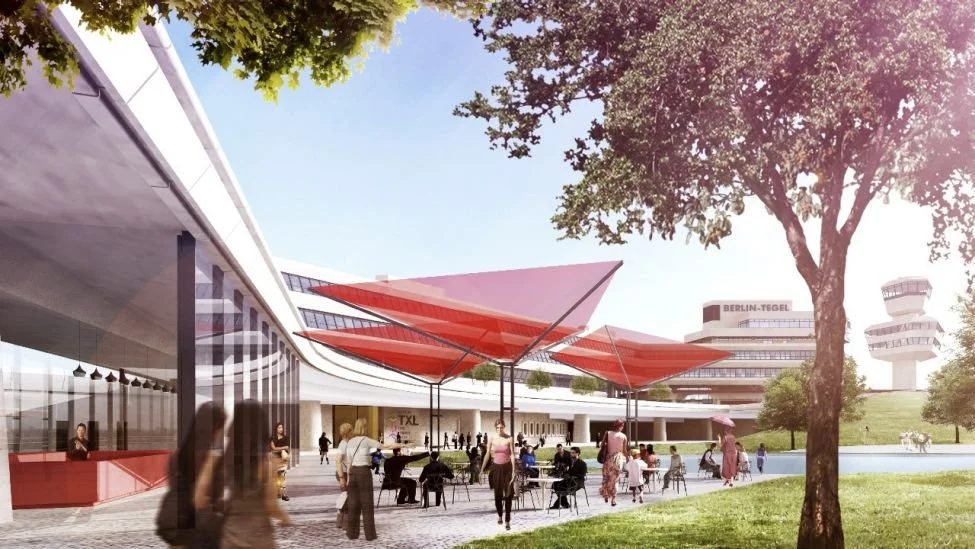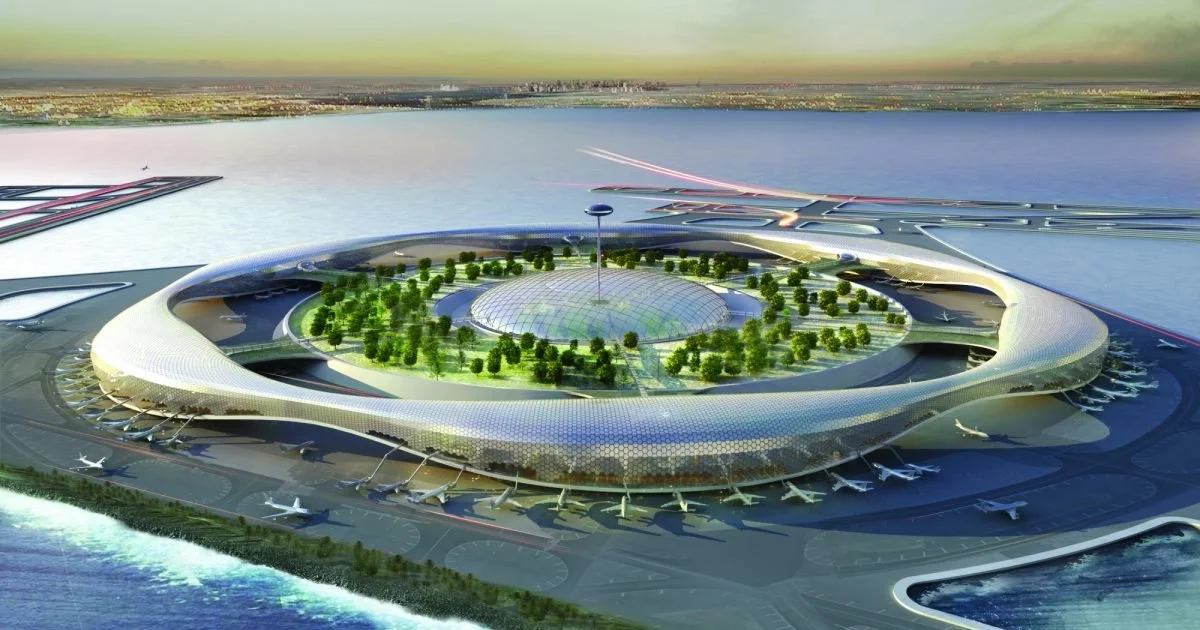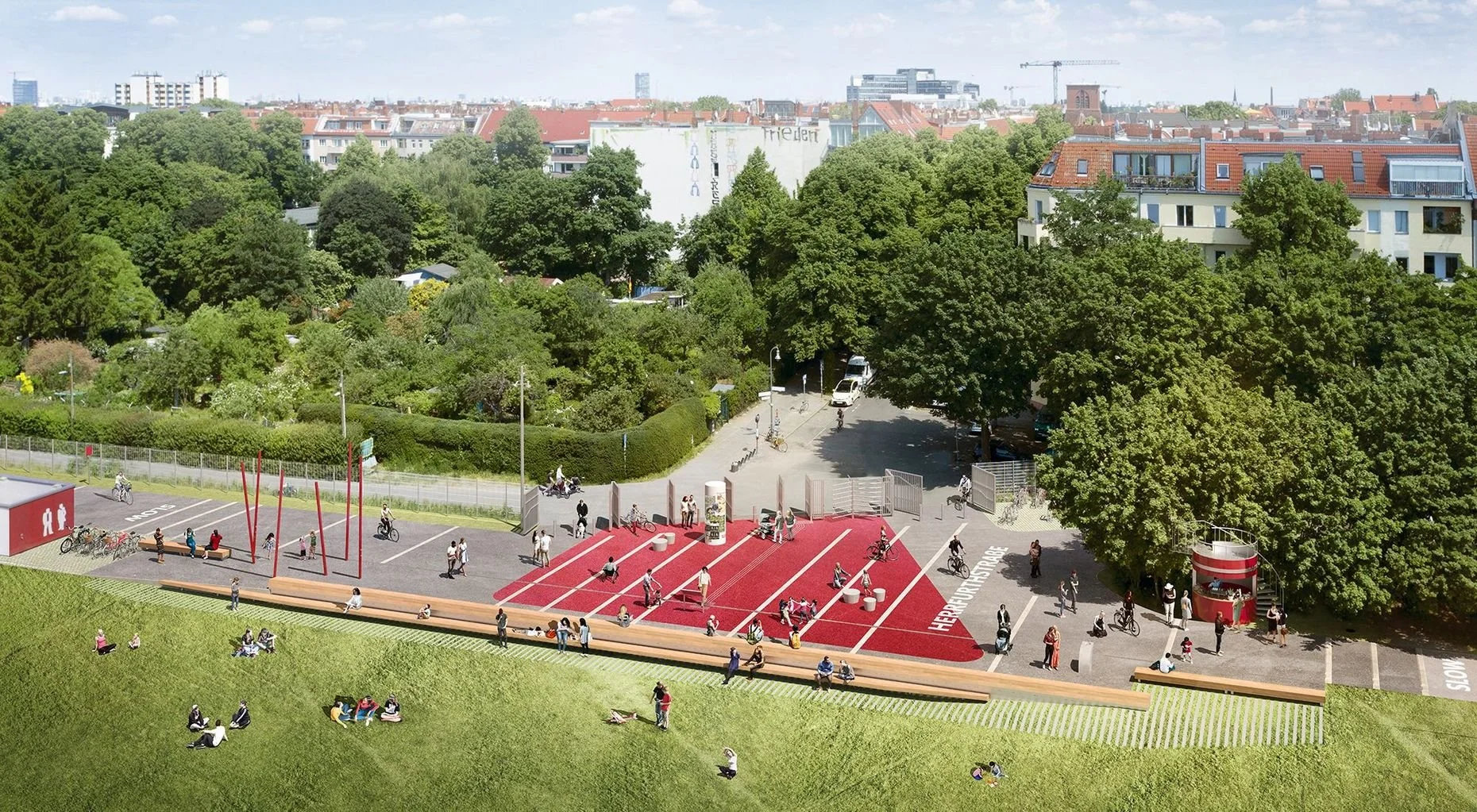✈️ ✈️ ✈️ ✈️
Read that again. Berlin has almost as many airports as London, yet we only operate one as such — BER.
The list of missed opening dates from the initial planning proposal in 2006 to its opening in October 2020 is long, but this should not be our focus.
We were wondering how Berlin is sustainably repurposing these infrastructures.
Taking you on this journey we ask you to fasten your seatbelts, sit back and relax.
In Berlin, only one of four airports is for air travel.
💺
🛩️
🛩️
🛂
Your passport & ticket, please.
We want to take you on a carbon-free journey to the following destinations: Berlin Tegel, Berlin Schönefeld, and Berlin Tempelhof. Three airports with long histories, told in the terminals and runways that are no longer used as such.
😌
Carbon-Free
🧑💻 🧪🚀
🌳 🛹 🪁
Isn’t this a lot of “empty” space in the cargo hold?
Berlin has a total of 3870 football fields of airport infrastructure, which makes it 6 times the size of Central Park!
🏟️
🌳
🌳
Yes, 6x the size of Central Park!
🌳
*Schönefeld’s airfield is still used for BER runways, but the total size doesn’t consider the 3 unused terminal buildings.
Get ready for departure.
New ideas for old airports.
Berlin is well aware of its lay of the land. So here’s what’s causing traffic at our airports that isn’t related to aviation.
With the closure of Tempelhof in 2008, debates on how to repurpose and reuse the airport infrastructure have risen every other year. The current use of Tempelhof as a public park is thanks to Berlin’s very unique and strong civil society which voted against the construction of housing on the “Feld” in a referendum in 2014. However, the 350-hectare grounds that belong to the state of Berlin (as all other airports and infrastructure do) are still considered an attractive development site for housing and debates are ongoing on various levels in politics and civil society. The 1.2-kilometre-long terminal is home to the capital’s innovation lab CityLAB Berlin and facilitates exhibitions, events and in the future, museums.
Airport Tegel however was handed over from the city of Berlin to the Tegel Projekt GmbH, a state-owned company, in 2021. They are now responsible for redeveloping most of the 500 hectare airport and its runways, making it one of Europe’s largest urban development projects.
According to the developers, 60,000 keys that grant access to more than 50 buildings on the airport grounds were handed over in the process. Tegel is now set to become a tech and science hub, as the terminals are being repurposed for academic and laboratory purposes of the BHT University. A new urban living quarter - the Schumacher Quartier - will be developed with a focus on sustainable materials and new mobility concepts.
Schönefeld’s recent closure in 2021 opened up another site for a potential redevelopment of an airport building and its neighborhood. Although the airport was being repurposed as “Terminal 5” the airport building won’t be used as such any longer. The vision as of 2024 is to create a district, known as SXF 2.0, offering flexible workspaces and experimental areas surrounded by green spaces designed for relaxation, social interactions, and exchange. To realise this vision, the airport initiated an ideas competition in August 2023. The three winning concepts envision a hub for conferences, encounters, prototyping, urban production, temporary living, and the integration of arts and culture.
A Future Flight
into 2030.
Tegel, Schönefeld, and Tempelhof are not forgotten remnants of the past but thriving symbols of Berlin's commitment to progress, innovation, and sustainability.
🔮
✈️
🌳
Tegel Airport
A Global Innovation Hub
Tegel Airport became a global innovation center, fostering collaboration between tech giants, startups, and research institutions. The repurposed airport terminals are vibrant innovation centers, hosting cutting-edge labs, co-working spaces, and incubators. The runways, once dedicated to aviation, are testbeds for next-gen transportation solutions, from autonomous vehicles to drone technologies. Tegel is now synonymous with breakthrough technologies, attracting minds from across the globe to shape the future of transportation and beyond
📡👩🔬
Schönefeld Airport
Green Energy Hub and Cultural Haven
Schönefeld Airport embraced renewable energy and became a model for sustainable urban development. The airport's vast spaces are adorned with solar farms and wind turbines, generating clean energy for the city. With its closeness to future sites like the Tesla Gigafactory, it became part of a larger ecosystem hub for sustainable energy and transport in the South-East. The terminals have been transformed into eco-friendly residential complexes, featuring vertical gardens and green roofs. The runways host open-air theaters, art installations, and cultural festivals. Turning Schönefeld into a haven where sustainability and creativity coalesce.
🌱⚡️
Tempelhof Airport
A Center for Arts, Education, and Green Living
Tempelhof Airport became a cultural and educational epicentre, focusing on the arts, sustainable living, and community engagement. The iconic terminal building is now a multifaceted space hosting art galleries, theaters, and interactive museums. Some of the spaces for were repurposed for innovative housing solutions, eliminating the need for new residential constructions on the site. The adaptive reuse of the terminal building is marked by sustainable design elements and modern amenities, transforming it into a hub for forward-thinking and environmentally conscious living. Tempelhof has become a hub for environmental education, where schools and universities collaborate on sustainability projects, and citizens gather for workshops on green practices.
🎨🧑🏼🌾
📜
These airport buildings have seamlessly integrated into the fabric of the city, serving as beacons of inspiration and change. Berlin's airports have become more than just transportation hubs; they have transformed into pillars of a harmonious future, where technology, culture, and sustainable living converge to create a truly visionary metropolis.
🗓️ Published: March, 2024

